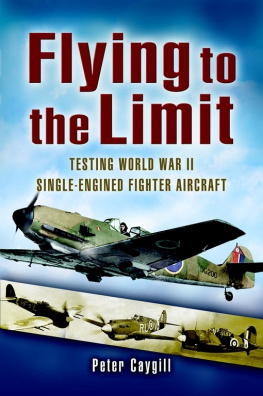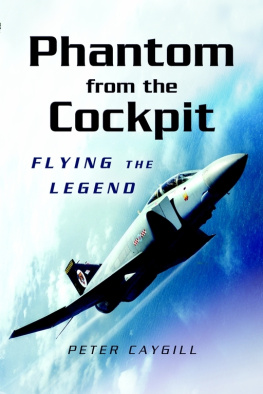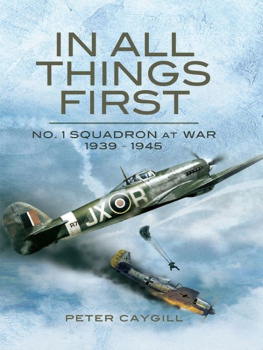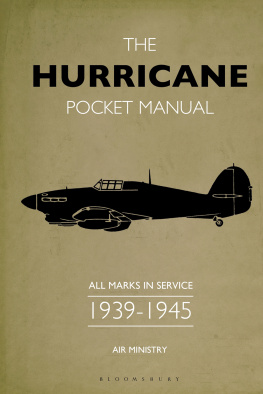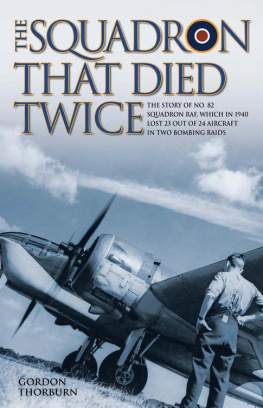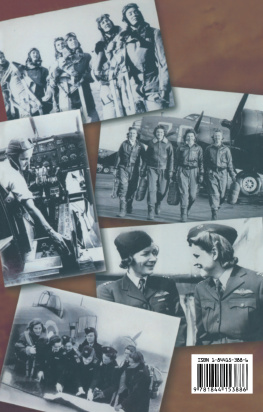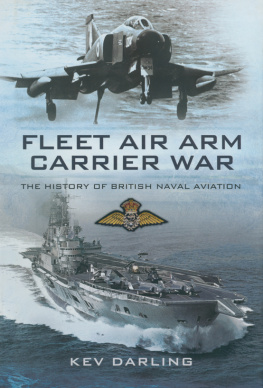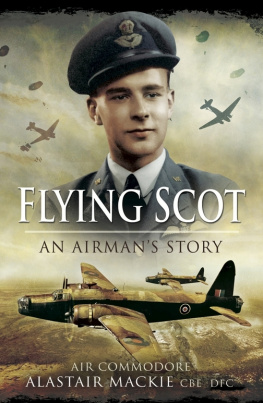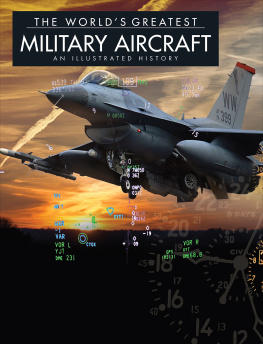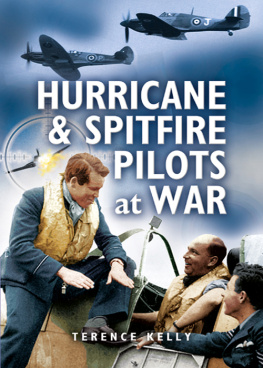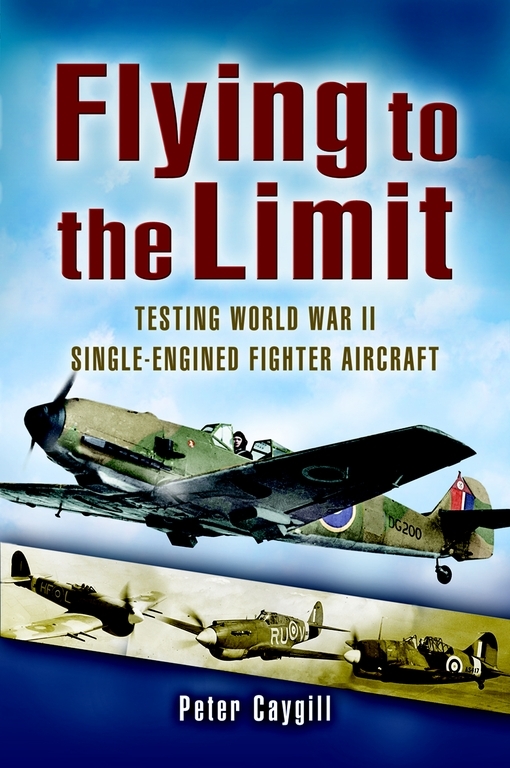M uch of my research for this book was carried out at the National Archives at Kew and I would like to thank the staff for their help in tracking down all the official reports and documents that form the basis of this work.
During the course of compiling this book I was very fortunate to be contacted by Len Thorne who spent three years with the Air Fighting Development Unit at Duxford, Wittering and, latterly at Tangmere, by which time it had become the Air Fighting Development Squadron, and was part of Central Fighter Establishment. Prior to his involvement with AFDU Len flew a tour on Spitfires in 1941/42 with 41 Squadron at Catterick/Westhampnett and 602 Squadron at Kenley, during which time he flew alongside the likes of Don Finlay, Al Deere, Paddy Finucane and Victor Beamish.
His logbook makes fascinating reading as he flew virtually every mark of Spitfire up to the F.21. In addition, he flew a wide range of single-engined fighters from the P-51 Mustang, P-47 Thunderbolt and Typhoon/Tempest, to lesser known types such as the Bell Airacobra, Blackburn Skua and Fairey Fulmar. During his time at AFDU he was also entrusted with showing off a captured Focke-Wulf Fw 190A at numerous fighter airfields throughout the country, from Exeter in the south-west to Eshott in Northumberland, and in the course of eighty flights he managed to accumulate over 100 hours on type. My special thanks go to Len for answering my numerous queries on the many aircraft he has flown and for his help and hospitality.
Unless otherwise credited, all the photographs in this book were supplied by Philip Jarrett from his extensive archive and my sincere thanks go to him once again.
Finally, I would like to thank Peter Coles and the production staff at Pen and Sword for their help and assistance with this project.
CHAPTER ONE
Hawker Hurricane
O n 6 November 1935 the prototype Hawker F.36/34 (soon to be named Hurricane) was taken into the air for the first time by Group Captain P.W.S. George Bulman, Hawkers chief test pilot. The type was to form the backbone of Fighter Command during the Battle of Britain, a conflict in which it destroyed more enemy aircraft than all other forms of defence put together. It was to go on to serve with distinction in many other theatres of war and the last Hurricane (PZ865) was delivered in September 1944.
Unlike the more radical Spitfire, the design of the Hurricane was closely related to its immediate forebears and it was initially known as the Fury Monoplane. It was to have been powered by a steam-cooled Rolls-Royce Goshawk, the favoured engine at the time of its inception, but development problems led to the adoption of the new Rolls-Royce PV.12, which later became the Merlin. Initially a fixed, spatted undercarriage and four guns were included in the design, but these quickly gave way to a fully retractable undercarriage and eight guns. The Hurricane followed Hawkers principles of construction, proved during manufacture of the RAFs classic inter-war biplanes fighters, with a standard cross-braced tubular steel structure, which was fabric-covered aft of the cockpit. The cantilever wing was of two-spar construction and was also fabric-covered.
The Hawker F.36/34 (serial number K5083) was passed to the Aeroplane and Armament Experimental Establishment (A&AEE) at Martlesham Heath in early 1936 for brief preliminary handling trials. Among the pilots to fly the new fighter was Sergeant (later Group Captain) Sammy Wroath, who was to become a distinguished test pilot and was the first Commandant of the Empire Test Pilots School (ETPS). By the time that K5083 reached Martlesham Heath, it had been modified in several respects and no longer featured the tailplane struts as originally fitted. The sliding canopy had been reinforced with additional frames and the radiator bath had been enlarged to aid cooling. A radio mast had also been fitted and the tail surfaces now had trim tabs.
Initial impressions of the F.36/34 were favourable. Access was easy with the hood fully open and the cockpit was considered to be roomy, comfortable and sufficiently warm, even when flying at an Outside Air Temperature (OAT) of 50C. It was not unduly noisy and the layout of the instruments and controls was good. The vision forwards and above was adequate, but there was a blind spot to the rear, which obscured the tail.
The view immediately downwards was largely blanked out by the wing, but no difficulty was experienced when taking off and landing. At speeds in excess of 150 mph indicated airspeed (IAS) it proved to be impossible to slide the hood to the open position and if already open, air pressure tended to suck it shut. This was obviously unacceptable, as the pilot would have been prevented from baling out.
The undercarriage could be retracted manually in about forty-five seconds without too much exertion and it could be lowered in slightly less than half this time. When in the down position, the wheels could be seen through small windows in the cockpit floor. The only airframe damage caused during the flight trials of K5083 was to the port undercarriage fairing, which struck the ground on landing, resulting also in a fractured pipeline to the brakes.
An assessment of the aircrafts flying qualities showed the ailerons to be light at low speed, but tending to become heavier with increase in speed to the point where they were considered to be rather too heavy for a fighter. A small peculiarity of the lateral control was that at moderate speed when the starboard aileron was raised, the feel suddenly became slightly lighter and control was more effective. The aileron response was rapid under all normal manoeuvres, but tended to deteriorate at speeds close to the stall, with reduced effectiveness. The elevators were light and effective and gave quick response under all conditions of flight from the stall to diving speeds. The rudder loads were light in the glide but a lot heavier with the engine on at high speed, although the response was quick and the control remained effective at all speeds. The elevator trimming gear was easy to operate and had no tendency to slip. The range of control was not quite enough to trim the aircraft for every condition of flight. Also, the operating cables were inclined to stretch, allowing some free movement to the trimming tabs and some fore-and-aft instability.
Dive tests were carried out from trimmed level flight up to a limit of 3150 rpm or 300 mph IAS, whichever occurred first. The aircraft was steady in the dive and small movements of the controls led to the correct response, without any sign of control surface instability or vibration. Compared with the biplane fighters in service at the time, the F.36/34 was not easy to sideslip and could not be held in a sustained sideslip beyond 10 degrees. If the engine was opened up with the undercarriage down and with the tail trimming gear and flaps set for landing, the aircraft could easily be held by elevator control before re-trimming.
The flap control gear was conveniently placed and easy to use, and took about 1015 seconds to move over the full range. There was a very noticeable nose-down change of trim when the flaps were lowered, but the elevator control was powerful enough to counteract this until the appropriate adjustment was made on the trimmer control. The flaps were very effective and tended to improve aileron control when down. In terms of stability, K5083 was laterally stable but tended to fly left wing low on the climb and right wing low at top speed. Directionally, the aircraft was neutrally stable with the engine on and stable with the engine off.

